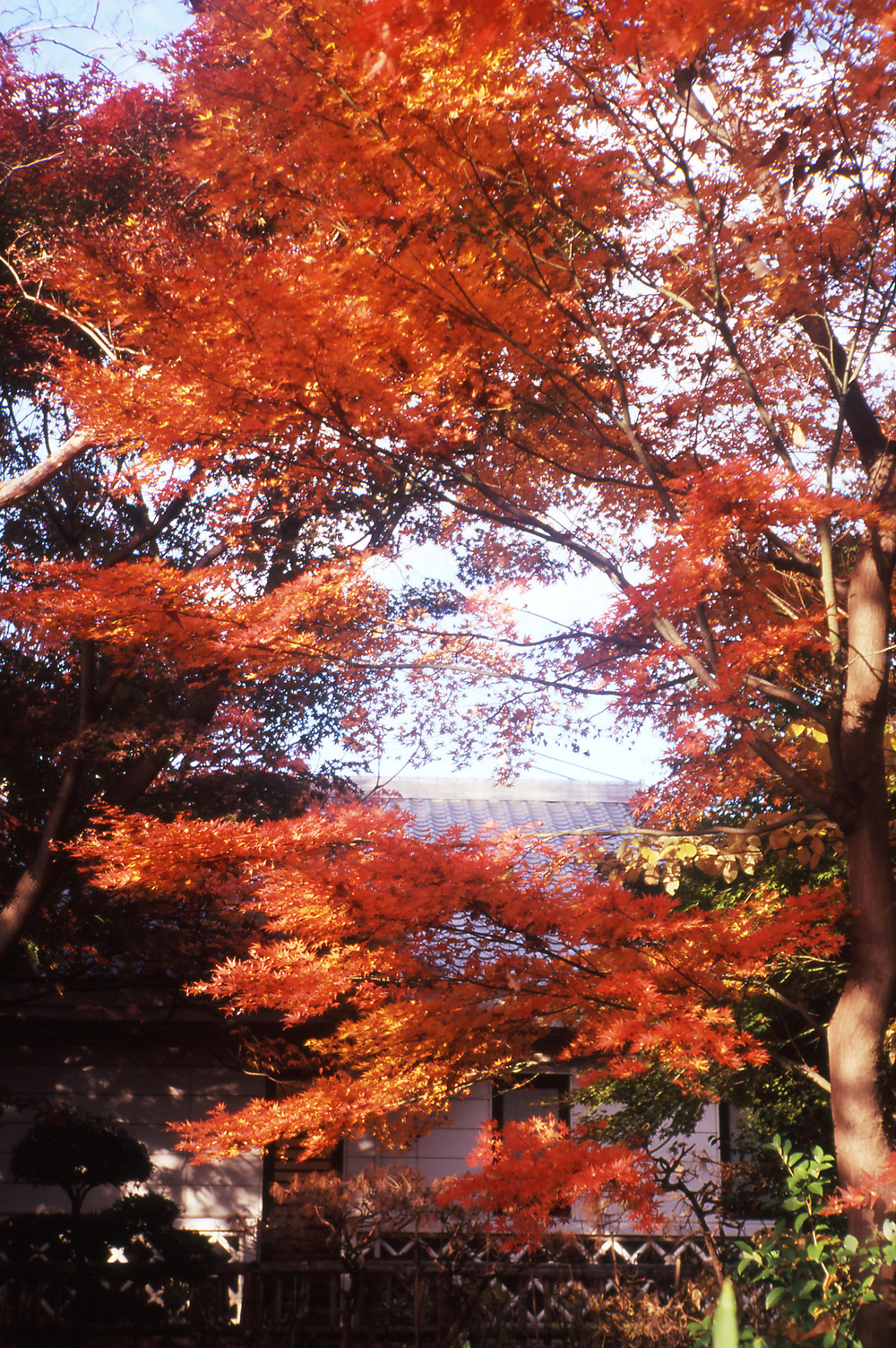NIKKOR - The Thousand and One Nights No.34

NIKKOR-H·C 5cm F2
Tonight, I would like to tell you about the early NIKKOR lenses, with focus on the Nikkor 5cm f/2 developed as the standard lens for Nikon S and L.
by Kouichi Ohshita
I. Mr. Saburo Murakami
In 1945, with the end of the Second World War, Nippon Kogaku K.K. (the current Nikon Corporation) changed its direction and turned from prior involvement in military manufacturing to the production of goods for civilian industry. In the same year, the company decided to produce photographic lenses in addition to binoculars and ophthalmic lenses and developed a series of interchangeable lenses for Leica cameras, starting from the Leica-mount lens 5cm f/3.5 (1945) to 5cm f/2 (1946), 13.5cm f/4 (1947), 8.5cm f/2 (1948), 3.5cm f/3.5 (1948), and 5cm f/1.5 (1949).
About these six lenses, the story has been passed down within Nikon that Mr. Saburo Murakami designed all the six lenses by himself. Designing as many as six lenses in four years is a miraculous accomplishment even in the present computer age. Needless to say, there was no electronic computer available in those days, and even the mechanical calculators were of the hand-cranked design such as the Tiger calculating machines. Could such a feat be achieved under those circumstances?
It was pulled off successfully due to the researches and data accumulated from pre-war days. To tell the truth, for three standard lenses among the six, the optical designs had been completed in the pre-war days. The 5cm f/3.5 and 5cm f/2 were designed around 1935 for the "Hansa Canon" cameras, and also for the 5cm f/1.5, the optical design was completed around 1942. It is not known whether the 5cm f/1.5 was released to the general public as a photographic lens, though the lens is reported to have been put on sale as a lens for X-ray radiography. As a matter of fact, development of the six lenses actually took ten years or more.
Before the war, the designing of photographic lenses was assigned to the Optical System Research Department in the Research Division (Ashida Lab), where Mr. Murakami was consistently involved in the design of photographic lenses. At that time, the company's staple products were range finders, periscopes and binocular telescopes for military use. The Research Division did not have any manufacturing function, and it had to ask the manufacturing department to give form to every engineering design developed. The optical designers in the Research Division reportedly used to be treated coldly and often were told, "What, are you still designing those lenses for fun?" However, they consistently devoted all their energies to designing photographic lense even during the wartime and successively developed the 5cm f/1.5 and various other lenses.
Mr. Murakami must have been very pleased, I'm sure, when he heard the announcement about the decision to produce interchangeable lenses after the war. "The persistence at last paid off." That feeling would have encouraged him to make every effort to design the three lenses in only four years. In those days, it took five to ten minutes for ray trace of one side of a lens, and at least one day was required to examine the performance of existing lenses. It is such an outstanding achievement that he developed the three lenses in four years after the war.
II. Development of 5cm f/2
The post-war rebirth of optical design functions was started with the collection and recovery of design data. Fortunately Ohi Plant survived from the fire of the war, though lots of data had been dispersed due to the confusion during the wartime. Then, Mr. Azuma and Mr. Murakami took the initiative to recover data from the notes of the staff members involved and the scattered pieces of reference materials, and they integrated those information into a whole document. The document was inherited by Mr. Wakimoto and Mr. Hatano and became available in the form of optical design reports.
For the three standard lenses with a focal length of 5cm, as they were designed by Mr. Murakami, the relevant data was successfully discovered and then, it was decided to go into production. However, for the 5cm f/1.5, the glass raw material was out of stock and the start of production was postponed until glass dissolution was launched. In this way, production of 5cm f/2 lens was successfully initiated, and it seemed to grow without any obstacle.
However, within one year of the start of production, Mr. Murakami received a bad news that the stock of glass was running short. Dissolution of optical glass materials, resumed after the war, met with repeated failures and failed to get off the ground smoothly, causing the stock accumulated even during the war to be exhausted.
There was no other choice but to make a change in the original engineering design. Mr. Murakami eventually made a decision. He renewed the design data by changing some glass materials based on the availability check sheet of glass in stock and managed to continue the production of the lens. However, again, within a few months of the change, the stock of the remaining glass also became depleted, and Mr. Murakami was forced to make an additional change. The confusion at last ceased in 1948 when glass dissolution took off on a full-fledged scale. Once again, Mr. Murakami reviewed the design data and redeveloped the design with more sophisticated performance, bringing the 5cm f/2 to its perfection. As explained above, there were many obstacles before the production got started, although the lens was designed before the war and the production was launched successfully after the war.
III. Lens configuration

As you can see in Figure 1, NIKKOR-H·C 5cm f/2 is a Sonnar-type lens comprised of six elements in threes groups. Last night in Tale Thirty Three, Mr. Haruo Sato picked up the 35mm f/2.8 developed for the L35AF, first Pikaichi compact camera, as a Sonnar-type lens, and the 5cm f/2 may be the ancestor of that lens.
At first glance, these two lenses look considerably different from each other in lens configuration. Why are they classified as the same Sonnar-type lens? Let me comment on the reasons. The 5cm f/2 features the three-element cemented lens, combining the second, the third, and the fourth element. Optically, the second and fourth elements are high-refractive-index lenses, while the third element is a low-refractive-index lens. This cemented lens offers both the effects of the convex lens of the second element and the concave lens of the fourth element. Based on this configuration, the Pikaichi lens was integrated with the third element substituted by an extremely low-refractive-index material, that is, air.
The three-element cemented lens was an excellent invention to reduce the interface with air, which contributed to the realization of a lens system with increased transmittance and minimized ghost in those days when the antireflective coating on the lens surface was not available. However, in the age of compact cameras when the coating technique made advances, the need for a cemented lens was obviated. Then, the second lens was removed and the 4-group 5-element system configuration was developed.
The Sonnar-type lens system features properly reduced coma for broader angles of view even when configured with relatively lower refractive index elements, despite the larger diameter of f/2. It contributes to yield high-contrast images even at full-open aperture.
On the other hand, due to the highly asymmetrical optical system, the pincushion distortion is difficult to compensate, and a slight astigmatism remains in the limited combination of the low-refractive-index elements that were available at that time, creating somewhat unsatisfactory defocused images.
Also, for the Nikkor 5cm f/2, a triangular out-of-focus background appears in the periphery of images under some shooting conditions, which is one of the imaging characteristics of this lens. In addition, for the astigmatism, the improvement gradually takes into effect as the lens gets stopped down, giving limited change in performance. That makes this lens yield consistent imaging characteristics at all available aperture settings.
IV. Imaging characteristics

Leica IIIf
NIKKOR-H·C 5cm f/2 f/2
1/2 sec. RVP100
©2007 Kouichi Ohshita

Leica IIIf
NIKKOR-H·C 5cm f/2 f/4.5
1/100 sec. RVP100
©2007 Kouichi Ohshita

Leica IIIf
NIKKOR-H·C 5cm f/2 f/2
1/30 sec. RVP100
©2007 Kouichi Ohshita
Here, let's examine the imaging characteristics of the lens with the sample photos. The sample photos were taken with a combination of a Leica L-mount lens at hand and Leica IIIf. Unfortunately the sample photos show some unintentional flares at the highlighted part due to a scratch on the front element and a slight clouding on the medial element.
This lens represents high-contrast images with less coma flares even at full-open aperture, which is a typical characteristic of the Sonnar-type lens. Sample 1 shows a night scene taken at full-open aperture. On the periphery of the frame a small number of triangular or arrow-shaped coma flares are shown, though the lens delivers has high contrast images.
Sample 2 shows the autumn leaves taken with the lens stopped down a little to f/4.5. Stopping down the lens from f/4 to f/5.6, the coma flares seen at full-open aperture disappear over the frame, providing images of increased sharpness. Due to the remaining slight astigmatism, significant improvement in detailed resolution is not seen, although contrast is further increased. The thickness of the outline may account for the dynamic imaging characteristics befitting the NIKKOR lens. Image disturbance remains on the limited range of the frame corners due to coma flares at apertures of f/4 to f/5.6, though the disturbed images at the corners disappear by stopping down the lens to f/8 to f/11. Then the effects of astigmatism are eliminated, providing magnificent results throughout the entire shot.
The Leica L-mount 5cm f/2 lens equipped with helicoids that allow you to increase the amount of displacement of the lens to 1.5 ft. Not interlocked with the rangefinder, it enables you to easily capture small subjects. Sample 3 was taken at full-open aperture at a subject distance of 50 to 60cm. Though not interlocked with the rangefinder, it is possible to measure short distance of approx. 50cm with a measure or to move the entire camera in regards to parallax handling.
The lens can cause triangular defocusing on the periphery of the image due to the influence of the residual coma and astigmatism. This type of defocusing is not favorable in general, but it is not so inconspicuous that the defocused image becomes larger in such short distance shooting. Defocusing should be improved by stopping down the lens, and it is recommended to narrow the aperture to around f/4 to obtain better results.
The six lenses designed by Mr. Murakami constituted the bread-and-butter lines jointly with binoculars and other products for what Nippon Kogaku was then. The Nikon I was completed in 1948 as the first compact camera developed immediately after the war. In actuality, however, the production scale of cameras was smaller than expected, and really did not get into the full swing until 1951 when the Nikon S was released. Until that time, the six NIKKOR lenses had supported the camera business. The 5cm f/2 was at the center of the production of these six lenses, and it should be credited as a mainstay encouraging the post-war rebirth of the camera business.

NIKKOR - The Thousand and One Nights
The history of Nikon cameras is also that of NIKKOR lenses. This serial story features fascinating tales of lens design and manufacture.

